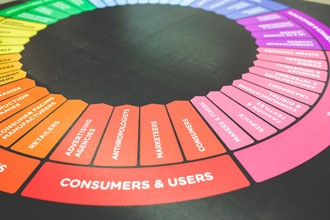
The social-media landscape is never totally at rest. Established names are always fighting to retain their position (and sometimes they lose). New entrants are always trying to break in. They may or may not be trying to topple the old giants. Sometimes they find new niches. With that in mind, here is a quick guide to the new rules for social media marketing in 2022.
Focus your attention on the right platforms
As a rule of thumb, you want to start out with your website and one social media platform. Once you’re getting traction on that, you can then start building a presence on another social media platform. In principle, you could continue this exercise until you’d covered all the available social media platforms.
In practice, however, it generally makes sense to stick to a maximum of three platforms. For smaller businesses, this is generally the sweet spot between diversification and spreading yourself too thinly. Ideally, your chosen platforms should complement each other. This makes it easier to repurpose content between them.
Here is a quick overview of the main social media platforms going into 2022 and what you need to know about them.
Facebook was arguably the first social media platform (in the modern sense). It’s long since lost its edginess but it remains fairly popular with younger people. If, however, your main target is the under-25s then Facebook is unlikely to be the platform for you. By contrast, if you want to reach out to “silver surfers” Facebook could be an excellent choice.
For many businesses, the main attraction of Facebook is the possibility of getting access to Facebook groups. These cover a huge range of topics and are very popular. Keep in mind, however, that these groups are run on Facebook, not by Facebook. In other words, you are not guaranteed direct (free) access to them. You may need to reach out through sponsored posts.
Instagram has long been known as the place to find exquisitely curated photo feeds. It’s popular with people of all ages. Again, however, it’s not, currently, the best place to reach out to the under-25s. Instagram is, however, openly and aggressively competing for this market. Only time will tell if it succeeds.
Part of Instagram’s strategy for winning over younger users is to push into the area of short-form video. It introduced Instagram Stories in August 2016 and Instagram Reels in August 2020. Currently, Instagram Reels are benefitting from a high level of organic promotion. In fact, all the signs are that, for the time being at least, they are a must if you want to grow on Instagram.
Twitter became known as the place to find straight-to-the-point text messages. It’s still a site known for brevity but it now supports all kinds of short-form content. In fact, if you want to concentrate on photos rather than videos, Twitter can be a better option than Instagram.
Like Facebook and Instagram, Twitter attracts a wide demographic. It’s largely retained its relevance amongst younger audiences. What’s more, Twitter users are known for their loyalty to the platform. It can therefore be a great place for actively networking with potential customers.
YouTube
YouTube is still very much what it’s always been. It’s a place to share video content, especially longer-form video content. That said, its standards have become noticeably higher than they were in its early days. For example, even though beginner YouTubers may shoot videos on their phones, they often do proper editing on them afterward.
More serious YouTubers apply the sort of video production standards you’d expect from commercial TV and streaming platforms. That’s certainly what’s expected of business videos, even ones from smaller businesses.
Interestingly, YouTube doesn’t (yet) appear to be under any real threat from other platforms even though so many of them are promoting video heavily. This is probably because its monetization options are a major incentive for content creators to stay on the platform.
Pinterest is essentially a social media engine with an engaged user community. It has fairly widespread demographics ranging from 18-24s to “silver surfers”. Pinterest now is pretty much where Instagram used to be.
The platform is massively focused on images although its video content is expanding. Unlike Instagram, however, Pinterest currently seems to be content to let the move to video happen organically.
Another potential benefit of using Pinterest is that they’re happy to allow external links. Instagram only allows regular users one link and that has to be in their bio. Power users get more options but even they are limited compared to other sites.
You might never have thought of LinkedIn as a social media platform but that’s essentially what it is. What’s more, it has a very clear demographic. This means that, generally, it’s either clearly for you or clearly not.
Snapchat and TikTok
Snapchat and TikTok are both massively popular with the under-25s but they both had their share of controversy. TikTok in particular has run into legal issues in various countries. If you do want to use them, then it’s advisable to work on building up your presence on another platform at the same time.
The obvious coupling is TikTok and Instagram. Instagram Reels are essentially a copy-and-paste of the short-video format used on TikTok. This means that content can easily be reused across both sites.
The best way to do this is to create a video that works on either platform. Then upload it to each site and edit it using the provided tools. That way each platform will interpret it as being native content.

Photo by Kaboompics .com from Pexels
Be prepared to pay to play
If you really want to gain maximum reach in minimum time, then you are going to have to use a three-pronged strategy. Firstly, you’re going to need to create great content. Secondly, you’re going to have to pay to promote it. Thirdly, you’re going to need to follow through by working to engage with your community.
The key point to understand is that the purpose of any social media platform is to keep users on that social media platform. This has two implications. The first is that they need to provide high-quality content to keep people interested. This means that they need people to generate that content for them. Secondly, they generally prefer content without outbound links.
As a result, your best chance of getting organic promotion is to produce exactly the sort of content the sites want. Even then, you’re likely to get a strong boost if you pay to promote it. If you want content with outbound links to be put in front of people, then you should expect to need to pay.
If you have a tight budget, then your best strategy is to focus on organic promotion and community engagement. This should allow you to build up a following. It’ll just happen more slowly. Once you have some traction, you can use your follower base to help spread content with outbound links.
Respect the site’s formatting rules
This one is really for video but since video is huge on social media just now, it’s vital to be aware of it. All social media platforms have their own rules on video-aspect ratios. What’s more, they may have different rules for different types of video on their own site. In fact, Instagram even has different rules for the same type of video on its own site.
If an Instagram Reel is shown full-screen, it has a 9:16 aspect ratio. If, however, it’s shown in your feed, it has a 4:5 aspect ratio. As a result, knowledgeable content creators usually go out of their way to make sure that the key content can be seen in the 4:5 format. The rest of the space is either kept as background or used for “bonus” content.
This provides a useful example of how to deal with the “format wars” between the different social media platforms. Make sure that you film videos with the key content in a space that will be seen on most, if not all platforms.
The elephants in the room here are Instagram and TikTok as they use portrait format, whereas everybody else supports landscape. This does not, however, need to be a huge issue. For example, you could just film short “teaser” videos for these platforms. Keep your long-form content for platforms that support landscape format.
Keep your ears open for audio
If you’re producing video content, make sure that you include suitable audio. If you’re producing text content, then strongly consider providing an audio version, at least for your key pieces. The right audio will boost the quality of your visual content. It will also make it accessible to people who can’t see the screen or at least not clearly.
The obvious example of this is people with reduced sight. If, however, you think about how video is consumed, the potential applications are much broader. A lot of video content is viewed on mobile devices. These have small screens. As a result, people often need suitable audio to process the visual content effectively.
Effective audio can also help you to hold the attention of people who have videos playing while they do other tasks. For example, someone doing housework probably won’t be able to keep their eyes on the screen all the time. They can, however, follow along with the audio.



